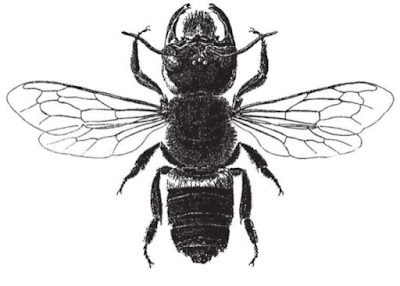Giant Bee as a Living Fossil
People who have followed the origins controversy have probably heard the term living fossil, originally used by Charles Darwin. This term essentially means that something living shows no appreciable change over millions of Darwin years. Wallace's Giant Bee is an ironic contribution.
This bee was made famous by Alfred Russell Wallace, a friendly rival of Charles Darwin, when Wallace was in Indonesia. It was thought extinct since 1981, but was found again recently. Nice when that happens. However, it also prompts evolutionists to come up with Just So Stories that rival Rudyard Kipling. You see, amber is quite a preservative, better than a typical fossil, so they have to explain away the lack of change. "Stasis" is a non-explanation that buzzes the wrong way for evolutionists' claims, and is just an excuse to get out of admitting that life was created recently.
 |
| Megachile pluto, Wallace's Giant Bee drawing by Dr. Heinrich Friese |
Every now and then one of these ancient giant insects is discovered to be still living today. An example is the world’s largest bee, Megachile pluto, which was recently rediscovered on an Indonesian island. The bee, which grows up to an inch and a half long and has a wingspan of 2.5 inches, is roughly four times larger than a honeybee. Morphologically, it is clearly a bee, and yet it is very different from all of the bees we are familiar with, especially the honeybee. Called a living fossil, it has very large un-bee like mandibles that resemble those of a stag beetle. . .To read the entire article, click on "Living Fossil Giant Bee Challenges Evolution".
Reported widely by the press, this find created an interest in the enormous variety of insect life on earth. Unfortunately, labels such as “primitive” are often applied by evolutionary scientists and reporters to describe life assumed to have existed eons ago, but this ancient bee was anything than primitive. It had as complex a body and brain as modern insects have. How do we know this? The answer lies in the way they were preserved.